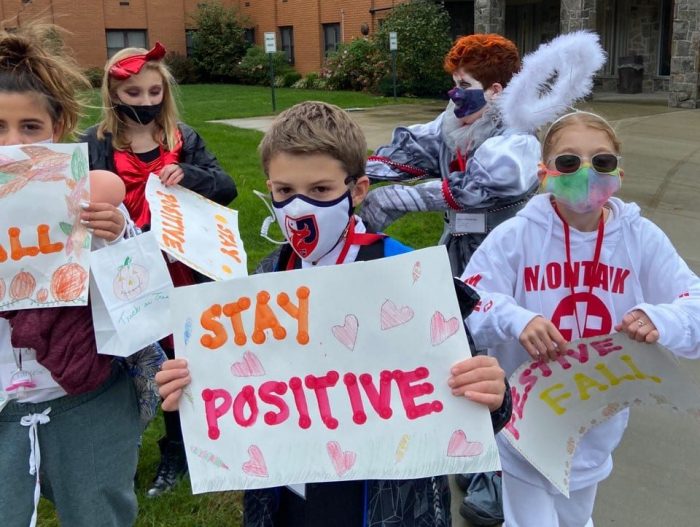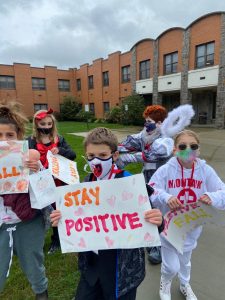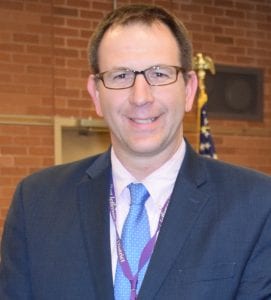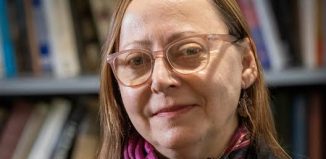School Districts Attempt to Break the Stigma on Mental Health During Pandemic

With the approaching emotions of the holidays, Suffolk County residents may face persistent and unwanted changes in their lives, from not seeing a cherished family member to remaining confined to the same house where they work, live, eat and study. Between now and the end of the year, TBR News Media will feature stories about the impact of the ongoing pandemic on mental health. The articles will explore how to recognize signs of mental health strain and will provide advice to help get through these difficult times. This week, the article focuses on youth.
School districts are letting their students know that it’s okay to be in touch with their feelings.
During this unprecedented and scary time, district officials across the North Shore said they immediately knew that they needed to buckle down and implement different mental programs to accommodate the changing landscape of education and the COVID-19 pandemic worry.
Jennifer Bradshaw, assistant superintendent for instruction and administration with Smithtown Central School District, said they started the school year with training for all staff members in social and emotional learning.
“We’ve always privileged student and staff mental health and wellness, so we’re doing what we did in years past, just a lot more of it,” she said.

Smithtown has been including ongoing contact among school counselors, social workers, psychologists, administrators, teachers and other staff members to evaluate student and family needs for food, technology, mental health, counseling, and academic support.
Farther east in Rocky Point, Toni Mangogna, a social worker at Rocky Point High School, said they have been seeing an increase in student anxiety surrounding the pandemic. “Coming back to school is so different,” she said. “We’re trying to get our services out to as many students and families as we can.”
As part of their SEL programs, the district offers a virtual classroom that students can access at home or while in school to request an appointment with a school counselor or psychologist.
“It’s a great option for kids who are working from home,” she said. “I think students miss that one-on-one connection.”
The virtual office also offers breathing exercises and tips for practicing mindfulness. Mangogna said she sees students sharing the services with their family and friends.
“These students are really in touch with their feelings,” she said. “If we can make that connection with parents and students, I think we’re really making a difference.”
The Rocky Point social worker added that while the kids are stressed, parents are seeking help, too.
“Parents have anxiety,” she said. “It’s difficult for parents to be that support for students when they’re having their own struggles and anxiety.”
Her colleagues have been working to help and refer parents to local psychologists.
“Because we don’t have that face-to-face opportunity anymore, it increases wanting to talk to social workers,” she said. “Just to have somebody in front of them that can validate that feeling. I think students miss that one-on-one connection.”
Dr. Robert Neidig, principal at Port Jefferson Middle School, said they are implementing different programs specific to his and the high school’s students.
“At the middle school, we have a wellness and mental health curriculum with different types of activities students can do,” he said.

Neidig said they’ve had the program for a while, but during the COVID crisis, they “suped it up and since implemented character education lessons.” Since September, they hired a full-time psychologist for the middle school and the high school.
“During this time, it’s taken on new meaning,” he said. “Stress levels, anxiousness — we’re all feeling the effects of it. We’re trying to do the very best we can.”
He added that every teach is going above and beyond to make sure their students are doing alright.
“It doesn’t matter if you walk into a health class, an English class or math class,” he said. “Teachers are taking the time to check in students they understand if kids aren’t there mentally, the learning will be lost.”
Three Village Central School District’s executive director of Student and Community Services Erin Connolly said they also implemented a virtual program to continue and promote SEL.
“Our district really values mental health,” she said. “We have been working on return to school protocol and mental health plan for students and family for pre-k through grade 12.”
Their three-tier plan has a strong emphasis on supporting the district’s staff.
“By supporting them, we’re supporting the students,” she added. “It’s a dynamic plan.”
Dr. Alison Herrschaft, a social worker at Three Village, said that early on in the school year, counselors and social work staff met with each and every student in the school.
“By doing that, it gave those kids the opportunity to put a face to the staff who can help,” she said. “They’re more likely to seek out help if they’re really struggling and acknowledge that it’s okay to not be okay.”
By integrating themselves more into the hallways and classrooms, Herrschaft said the kids who might not have been aware of the staff before, now see these staff as “rock stars.”
“We wanted to normalize asking for help,” she said. “It’s accessible to anyone who needs it.”
Although Three Village buckled down during the pandemic to make mental health more available, they won’t stop their program even if a second wave hits.
“A big goal with the plans we developed is if we had to go remote again, based on numbers, our SEL plans will continue while we’re out,” Connolly said. “It was really important to have a seamless transition so that doesn’t change, and it still gives kids points of contact if they’re home again, they’ll be well-versed.”






